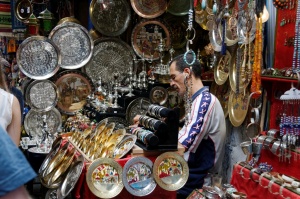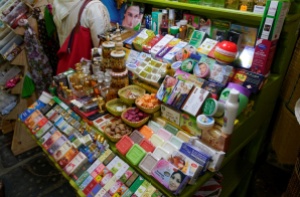I don’t know about anybody else, but last week I hit an emotional wall. Tuesday night I got up every few hours and went to check the news results. (I live in Germany, and we’re six time zones ahead.) When I woke up Wednesday morning, things in the USA presidential election were still undecided. Like the rest of the world, I was holding my breath – and about to turn into a permanent nervous wreck.
On that night, or maybe it was the next night, I stopped following the news reports. I honestly can’t remember which day I decided I needed a serious distraction.
And so, for the last five or six days, I’ve been revisiting Brideshead Revisited.

I revere Evelyn Waugh’s book, which I read again and again with pleasure. I first saw the Brideshead Revisited BBC series on PBS television in the early 1980s. I loved the show so much that I bought myself the DVD set. Jeremy Irons, Sir Laurence Olivier, Diana Quick, Sir John Gielgud, Anthony Andrews, Claire Bloom – what’s not to love? The acting is wonderful, the scenery is beautiful, the story evocative and wistful. Jeremy Irons’ voice overs make Waugh’s writing sing.
“But I was in search of love in those days, and I went full of curiosity and the faint, unrecognized apprehension that here, at last, I should find that low door in the wall, which others, I knew, had found before me, which opened on an enclosed and enchanted garden, which was somewhere, not overlooked by any window, in the heart of that grey city.”
The first time I went to Europe traveling alone, I made a point of going to Oxford; I had fallen in love with the city depicted in the book.
“Oxford, in those days, was still a city of aquatint. In her spacious and quiet streets men walked and spoke as they had done in Newman’s day; her autumnal mists, her grey springtime, and the rare glory of her summer days – such as that day – when the chestnut was in flower and the bells rang out high and clear over her gables and cupolas, exhaled the soft vapours of a thousand years of learning.”
Last night (November 9th), during our second coronavirus lockdown, in the ongoing fight over the vote count, I sailed across the choppy, stormy Atlantic with Charles Ryder and Julia Flyte.
“Then something, some surviving ghost from those dead ten years – for one cannot die, even for a little, without some loss – made me say, “Love? I’m not asking for love.”
“Oh yes, Charles, you are,” she said, and putting up her hand gently stroked my cheek; then shut her door.
And I reeled back, first on one wall, then on the other, of the long, softly lighted, empty corridor; for the storm, it appeared, had the form of a ring. All day we had been sailing through its still centre; now we were once more in the full fury of the wind – and that night was to be rougher than the one before.”
My DVDs were formatted for early tv screens, and don’t look at all right on our wide screen television. But I don’t care. I watch one or two episodes each day, parceling out the pleasure, to make it last as long as I can.
“Sometimes, I feel the past and the future pressing so hard on either side that there’s no room for the present at all.”
“I felt that I was leaving part of myself behind, and that wherever I went afterwards I should feel the lack of it, and search for it hopelessly, as ghosts are said to do, frequenting the spots where they buried material treasures without which they cannot pay their way to the nether world.”
I am still deeply in love with Brideshead Revisited and Evelyn Waugh’s wise, melancholy voice. His words really are treasures, which pay my way to the nether world, every time I revisit.
NOTES: © Jadi Campbell 2020. Image courtesy of Wikipedia. All quotes from Brideshead Revisited by Evelyn Waugh. I will leave you with one last quote that says everything I care to about a particular political figure: “He wasn’t a complete human being at all. He was a tiny bit of one, unnaturally developed; something in a bottle, an organ kept alive in a laboratory. I thought he was a sort of primitive savage, but he was something absolutely modern and up-to-date that only this ghastly age could produce. A tiny bit of a man pretending he was the whole.”
The Trail Back Out is finished and available for purchase! In my new collection of short stories, two strangers meet in the woods. Children wear masks. A gambler hides in the cellar during a Category Five hurricane. A wife considers a hit-man’s offer. Princess Rain Clouds searches for happiness. An entire village flees, a life is saved, and a tourist in Venice is melting. Everyone keeps trying to make sense of strange events far in the past or about to occur. Let these characters be your guides. Join them on the trail back out – to a familiar world, now unexpectedly changed.
Click here for my author page to learn more about my books and me.
Like this:
Like Loading...



















 Our first stop was the UNESCO World Heritage city of Würzburg. [1]
Our first stop was the UNESCO World Heritage city of Würzburg. [1] Würzburg’s Residential Palace was built from 1720-1744 by Balthasar Neumann and is the most important building from the Southern German Baroque era. Definitely worth a visit! But I want to talk about a little statue I found in the Court Gardens in the back.
Würzburg’s Residential Palace was built from 1720-1744 by Balthasar Neumann and is the most important building from the Southern German Baroque era. Definitely worth a visit! But I want to talk about a little statue I found in the Court Gardens in the back.

 NOTES: [1] My readers know that Uwe and I make a beeline for World Heritage sites. They’ve always, always been worth the effort! [2]
NOTES: [1] My readers know that Uwe and I make a beeline for World Heritage sites. They’ve always, always been worth the effort! [2] 













 Being a writer almost always means feeling guilty about carving out time alone with a blank page of paper or a white computer screen. At the same time, being a writer means almost always feeling guilty for not creating time dedicated to empty paper/laptop.
Being a writer almost always means feeling guilty about carving out time alone with a blank page of paper or a white computer screen. At the same time, being a writer means almost always feeling guilty for not creating time dedicated to empty paper/laptop. I finally filled our balcony with planter boxes of flowers and herbs. We have more bees and pollinators than I’ve seen in years. Nature is loving this “Stop everything” business! And I got down to serious construction of Book #4, a collection of short stories.
I finally filled our balcony with planter boxes of flowers and herbs. We have more bees and pollinators than I’ve seen in years. Nature is loving this “Stop everything” business! And I got down to serious construction of Book #4, a collection of short stories. This was lockdown, so it’s not like I could go anywhere else, right? Wasn’t the Universe handing me exactly the time and space I needed to write my next book? I took my pages or laptop out the balcony and went to work.
This was lockdown, so it’s not like I could go anywhere else, right? Wasn’t the Universe handing me exactly the time and space I needed to write my next book? I took my pages or laptop out the balcony and went to work. I don’t know about you other writers out there, but the Muse makes me toil for months on end before she grants me an audience. I write every day, drudge work, one word after the next for my daily quota. Trust me: this is not inspired writing. It’s showing up and doing the job. I spent a few months planting my ass in front of my computer or my pages to revise, thinking, “What the hell ever made me think this will be any good?”
I don’t know about you other writers out there, but the Muse makes me toil for months on end before she grants me an audience. I write every day, drudge work, one word after the next for my daily quota. Trust me: this is not inspired writing. It’s showing up and doing the job. I spent a few months planting my ass in front of my computer or my pages to revise, thinking, “What the hell ever made me think this will be any good?” Now, half a year later, I’m getting ready to publish. This is my corona virus book; I could even title it, How I Spent My Summer Lockdown.
Now, half a year later, I’m getting ready to publish. This is my corona virus book; I could even title it, How I Spent My Summer Lockdown. NOTES: Text and Photos © Jadi Campbell 2020. To see Uwe’s photos and pics from our trips go to
NOTES: Text and Photos © Jadi Campbell 2020. To see Uwe’s photos and pics from our trips go to 


 I chatted with a large chocolatier-pastry chef who had worked in Switzerland. The woman who designed the bride’s clothes and the man who designed her jewelry. A professional jazz singer who had given her voice lessons.
I chatted with a large chocolatier-pastry chef who had worked in Switzerland. The woman who designed the bride’s clothes and the man who designed her jewelry. A professional jazz singer who had given her voice lessons.

